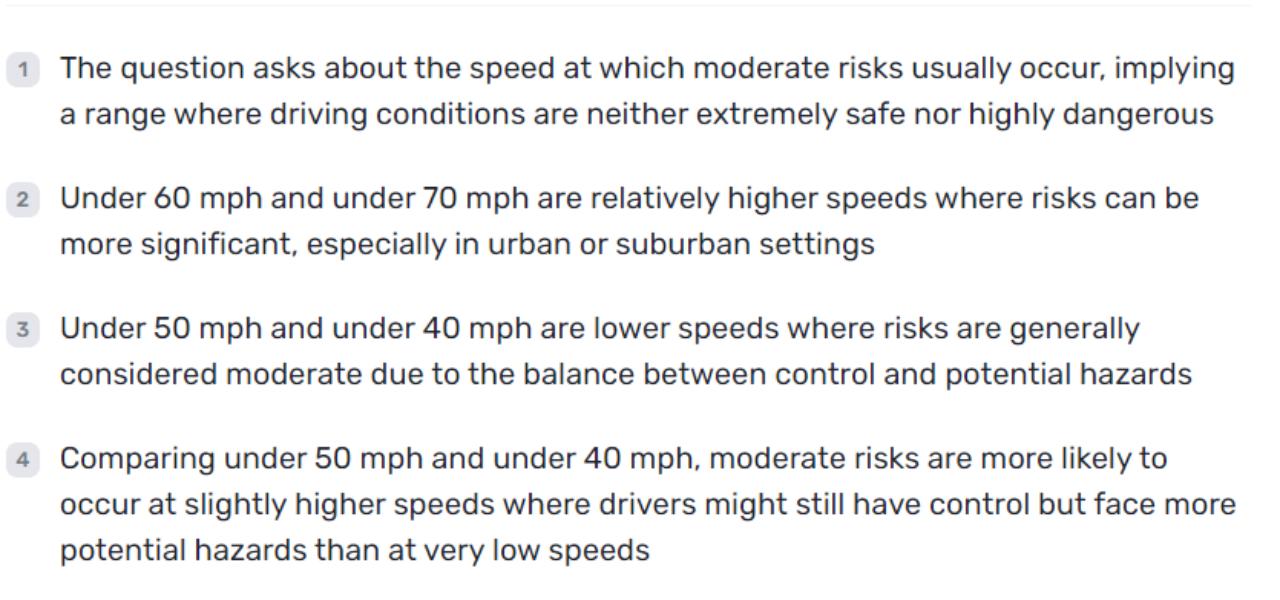A false sense of security can result from underestimating these risks or failing to anticipate when they might occur, leaving individuals and organizations potentially unprepared for the challenges that may arise. Understanding at what speeds do moderate risks usually occur? Becomes fundamental in this specific circumstance. We gain a significant advantage by determining the situations and circumstances that lead to these potential risks.
How to Know When Moderate Risks Occur?
Understanding when these moderate risks regularly happen turns into a useful asset in our stockpile. It permits us to move past essentially responding to unanticipated difficulties and on second thought embrace a proactive methodology. We are able to develop and implement mitigation strategies ahead of time by anticipating the timing of moderate risks.
We are able to effectively allocate resources, make well-informed choices, and ultimately reduce the risk's potential negative effects thanks to this foresight. Take, for instance, the scenario of a driver on a lengthy journey. Drivers can adjust their following distance and signaling habits in response to the moderate risks posed by highway entry and exit due to merging traffic and increased speed changes.
This proactive approach lowers the likelihood of side-swipes or rear-end collisions, potentially preventing damage to property and ensuring their own and others' safety on the road.
Identifying Moderate Risks
Moderate risks are those that have the potential to harm, but the consequences are typically less severe than those with high risks. In rush hour gridlock circumstances, moderate risks could imply:
● Rapid Speed Changes
High-traffic manoeuvres like merging or exiting highways can increase the likelihood of rear-end collisions. Surprising stoppages further increment risk, as the following vehicles might have the opportunity and energy to respond.
● Pedestrian and Intersection Hazards
Drivers face moderate risks from running red lights, failing to yield to pedestrians, and abruptly stopping in residential or urban areas with frequent pedestrian crossings and lower speed limits, around 50 mph or less.
● Rural High-Speed Roads
Even on highways with speed limits of more than 70 mph, lane changes, merging traffic, and sudden braking can pose moderate risks, particularly in conditions with a lot of traffic. Drivers must be even more cautious in order to avoid accidents because these manoeuvres can result in close calls.
Steps to Use Gauth to Find the Exact Answer
You can follow the given steps to use Gauth to find the exact and authentic question to any of your queries:
Step 1: Access Gauth
The first step in using Gauth is to access the platform by opening its website in a browser or its mobile app on your device. Remember that you want to have a functioning web association for this step.
This makes it easy for users to access the platform and find answers to their questions whenever and wherever they need.
Step 2: Enter the Question Along with Options
Fill in the Question and Available Options Use the provided options to enter the analogy question into the search or input field. For instance, in the case of the analogy, at what speeds typically occur moderate risks? With choices "under 60 mph"," under 50 mph", "under 70 mph", and "under 40 mph" input this data precisely.
The advanced algorithms of Gauth will then examine the options and the questions to give you the most accurate response possible.
Step 3: Get the Authentic Answer
Obtain the Real Answer To process your query, click or tap the search or submit button. Gauth will quickly process the data and provide an accurate response. The answer, along with any supporting explanations, will be shown on the screen. This step guarantees that clients find the right solution as well as figure out the rationale behind it.
Summary
The driving environment and conditions can influence the speed at which moderate risks typically occur. Drivers can mitigate risks and ensure safer travel by comprehending these factors and being aware of the potential risks at various speeds. Gauth can assist you in answering each question.


